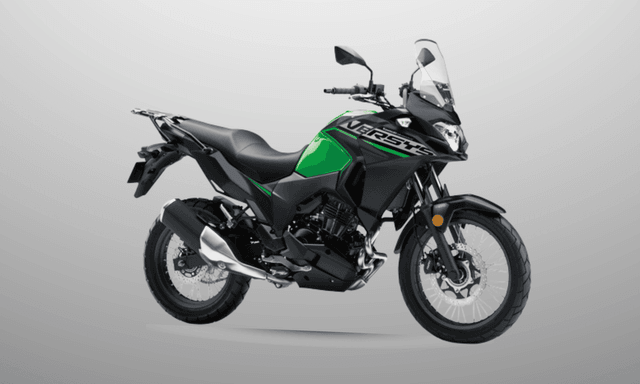Digital Instrumentation Clusters: How Useful Are They?

- The instrument panel of a car is known as a dashboard/fascia.
- Speedometers have been a part of car systems since 1910.
- The creator of an important instrument like odometer is Zhang Heng.
A lot of information needs to be processed while a person is driving. The driver needs to focus on the road while being aware of the surroundings and key components like tire pressure, speed etc. That is where the instrument cluster comes into play. The instrument cluster, traditionally, came in plastic housings that made it difficult for the driver to understand what they were seeing while driving. This made the inclusion of digital instrument clusters very necessary.

Old Instrument Clusters
The older clusters contained housings made of plastic that had mechanical gauges and indicator lights. The displays were generally electrical meter movements or friction drag instruments. The clusters essentially provided limited amount of information like engine temperature and speed.

What are digital instrument clusters?
A digital instrument cluster is a digital panel that essentially give digital displays instead of the analog gauges. They are commonly known as digital speedometers.

Semi-Digital Cluster
The need for more efficient information and a sleek design led the car manufacturers to look for other options. This gave way to semi-digital instrument clusters. Mostly seen in low-end cars, this cluster mostly makes use of analog dials as well as digital readouts. The analog dials provide things like temperature while the digital readout provides information like speed.

Advantages of Digital Instrument Clusters
- Digital instrument clusters allow for car manufacturers to focus more on the aesthetic looks and increase the brand appeal. A completely analog cluster makes for an unattractive design, something which car manufacturers are trying to avoid.
- The incorporation of software for these clusters allows for flexibility of display. All kinds of information can be accessed through the software.
- Extra information can be accessed now by the driver. For example, the driver can look for the nearest food joints or petrol stations through the cluster. The software can display information like energy-saving.
- The use of a completely digital cluster allows for personalization. This personalization allows the driver to prioritize the information that they need while enabling them to change things like font size and color.
- Digital instrument clusters also allow for car manufacturers to easily reduce the cost for machine parts. Since most of the focus is on technology, the need for plastic holdings is eliminated.

Photo Credit: en.wikipedia.org
Brands providing Digital Instrument Cluster
When the technology was introduced, luxury brands' cars were the first to incorporate this in their designs. But now, mainstream brands have also started investing in this technology and making it affordable for the people.
Some mainstream brands like Volkswagen allow users to use a digital instrument cluster system which can be used to access maps.
Big car giants like Tesla have chosen to replace this cluster entirely by using a touchscreen infotainment system instead of their models.
Trending News
 1 min readTriumph Tracker 400: In Pictures
1 min readTriumph Tracker 400: In Pictures 1 min readTriumph Tracker 400 Unveiled in UK
1 min readTriumph Tracker 400 Unveiled in UK
Latest News
 Janak Sorap | Dec 17, 2025Triumph Tracker 400: In PicturesTriumph has unveiled the new Tracker 400 based on the Speed 400. Here’s a quick look at the motorcycle in pictures.1 min read
Janak Sorap | Dec 17, 2025Triumph Tracker 400: In PicturesTriumph has unveiled the new Tracker 400 based on the Speed 400. Here’s a quick look at the motorcycle in pictures.1 min read Jaiveer Mehra | Dec 17, 2025Tata Sierra Smart Plus Revealed In Official Pictures: What Do You Get For Rs 11.49 Lakh?While nearly everyone has seen the Sierra in pictures and many in person at dealerships, you’ll likely only have seen the top models. But what is the base variant like?2 mins read
Jaiveer Mehra | Dec 17, 2025Tata Sierra Smart Plus Revealed In Official Pictures: What Do You Get For Rs 11.49 Lakh?While nearly everyone has seen the Sierra in pictures and many in person at dealerships, you’ll likely only have seen the top models. But what is the base variant like?2 mins read car&bike Team | Dec 17, 20252025 Ducati Panigale V2, Streetfighter V2 Recalled In The USThe recall states that two ABS fuses may have been inadvertently fitted in the wrong positions during wiring assembly and could increase the risk of a crash.3 mins read
car&bike Team | Dec 17, 20252025 Ducati Panigale V2, Streetfighter V2 Recalled In The USThe recall states that two ABS fuses may have been inadvertently fitted in the wrong positions during wiring assembly and could increase the risk of a crash.3 mins read Jafar Rizvi | Dec 17, 2025Updated Bajaj Pulsar 220F Does Not Get Dual-Channel ABS; Company Issues ClarificationBajaj Auto has confirmed that the updated Pulsar 220F does not feature dual-channel ABS, contradicting earlier reports.1 min read
Jafar Rizvi | Dec 17, 2025Updated Bajaj Pulsar 220F Does Not Get Dual-Channel ABS; Company Issues ClarificationBajaj Auto has confirmed that the updated Pulsar 220F does not feature dual-channel ABS, contradicting earlier reports.1 min read Janak Sorap | Dec 16, 2025Triumph Tracker 400 Unveiled in UKBased on the Speed 400’s platform with the tune from the Thruxton 400.1 min read
Janak Sorap | Dec 16, 2025Triumph Tracker 400 Unveiled in UKBased on the Speed 400’s platform with the tune from the Thruxton 400.1 min read car&bike Team | Dec 16, 2025Kawasaki Versys-X 300 Offered With Rs 25,000 DiscountAfter the discount, the entry-level Kawasaki Adventurer tourer is priced at Rs 3.24 lakh (ex-showroom).3 mins read
car&bike Team | Dec 16, 2025Kawasaki Versys-X 300 Offered With Rs 25,000 DiscountAfter the discount, the entry-level Kawasaki Adventurer tourer is priced at Rs 3.24 lakh (ex-showroom).3 mins read
 Janak Sorap | Dec 11, 2025Harley-Davidson X440 T First Ride Review: Smarter and SharperHarley-Davidson has taken the X440 and given it a more focused and engaging twist. The result is the X440 T—essentially the same platform but updated in areas that give the motorcycle more appeal and riders more thrill.5 mins read
Janak Sorap | Dec 11, 2025Harley-Davidson X440 T First Ride Review: Smarter and SharperHarley-Davidson has taken the X440 and given it a more focused and engaging twist. The result is the X440 T—essentially the same platform but updated in areas that give the motorcycle more appeal and riders more thrill.5 mins read Shams Raza Naqvi | Dec 10, 20252025 Mini Cooper Convertible Review: More Colour On Indian RoadsThe updated Mini Cooper Convertible is set to be launched in the Indian market in the next few days. We drive it around Jaisalmer for a quick review.1 min read
Shams Raza Naqvi | Dec 10, 20252025 Mini Cooper Convertible Review: More Colour On Indian RoadsThe updated Mini Cooper Convertible is set to be launched in the Indian market in the next few days. We drive it around Jaisalmer for a quick review.1 min read Bilal Firfiray | Dec 8, 2025Tata Sierra Review: India’s New Favourite?Marking its return after a few decades, the reborn Sierra has made everyone sit up and take notice. But is it worth the hype?10 mins read
Bilal Firfiray | Dec 8, 2025Tata Sierra Review: India’s New Favourite?Marking its return after a few decades, the reborn Sierra has made everyone sit up and take notice. But is it worth the hype?10 mins read Girish Karkera | Dec 4, 20252026 Honda Prelude First Drive: Domesticated Civic Type RA sporty-looking coupe built to give customers a taste of performance but not at the expense of everyday practicality.5 mins read
Girish Karkera | Dec 4, 20252026 Honda Prelude First Drive: Domesticated Civic Type RA sporty-looking coupe built to give customers a taste of performance but not at the expense of everyday practicality.5 mins read Seshan Vijayraghvan | Nov 29, 2025Mahindra XEV 9S First Drive Review: Big Electric SUV, Bigger ExpectationsThe XEV 9S lands at a time when the EV crowd is growing fast. It’s a big, born-electric, three-row SUV that starts under 20 lakh. It sits close to the XUV700 in size, but the brief is very different. Here’s what it’s like on the road.11 mins read
Seshan Vijayraghvan | Nov 29, 2025Mahindra XEV 9S First Drive Review: Big Electric SUV, Bigger ExpectationsThe XEV 9S lands at a time when the EV crowd is growing fast. It’s a big, born-electric, three-row SUV that starts under 20 lakh. It sits close to the XUV700 in size, but the brief is very different. Here’s what it’s like on the road.11 mins read































































































































